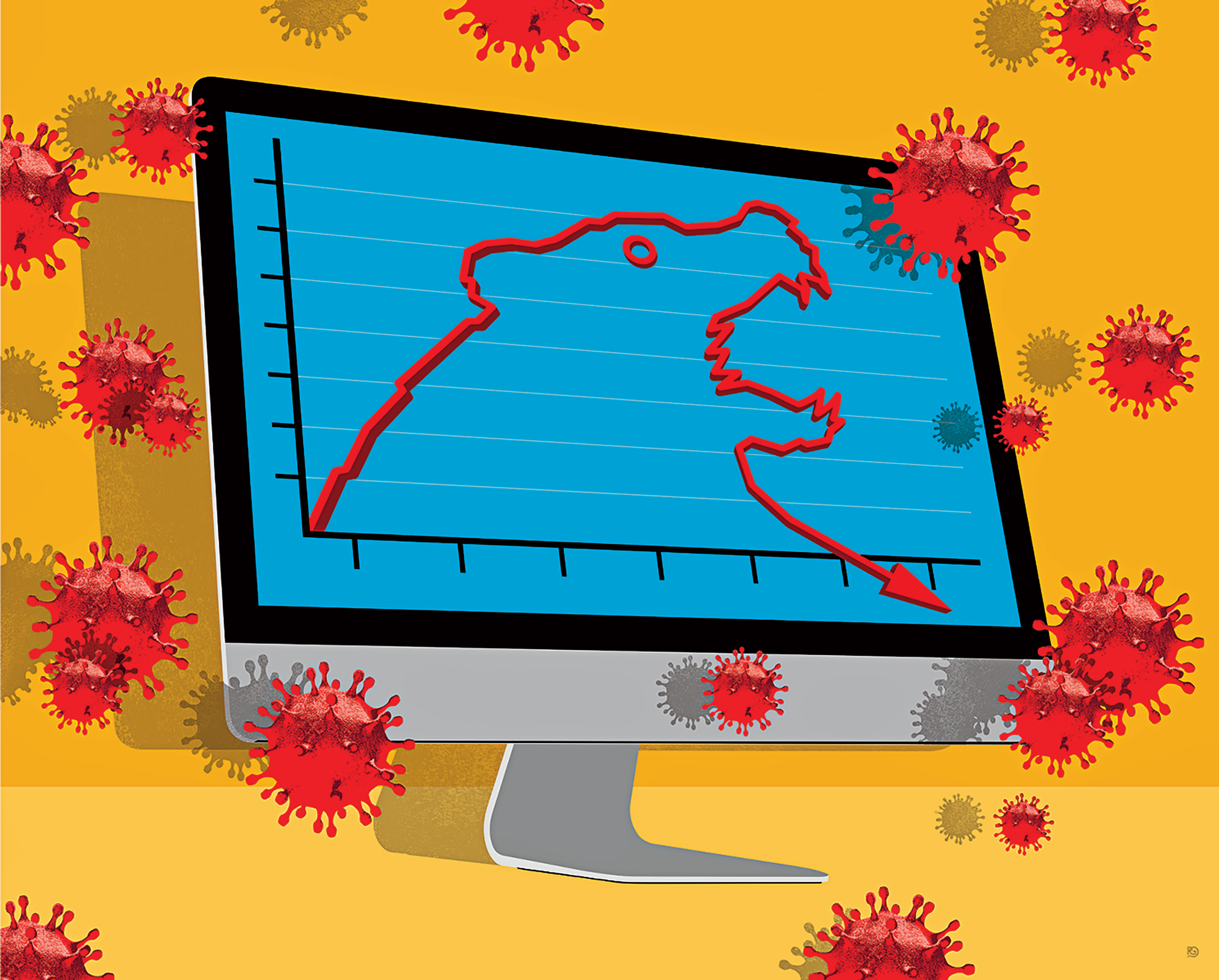
For weeks, I watched the evolving coronavirus crisis the way one observes an avalanche: it looks distant until suddenly it is upon you. I was inclined to take advantage and “buy the dips.” Then, something snapped: I started selling. I wanted cash. I panicked.
There. I said it. And I’m saying it to dispel the idea that the response of markets to what is happening is based on cold calculation of the future. It is based right now on a complicated mix of legitimate recalibration of what the economic future holds and pure unmitigated fear of loss. The former is absolutely necessary. The latter is utterly destructive. U.S. equity indices lost more than $10 trillion.
I have been an investor for almost 20 years. Through the bursting of the dotcom bubble, 9/11 and the resulting recession, and then during the massive financial collapse of 2008–2009, I never really got scared. This time, I did. In financial-land, selling and fleeing to cash is the real-world equivalent of hoarding toilet paper: it seems to make individual sense, but collectively it is nonsensical. We aren’t running out of toilet paper, unless we all try to buy it simultaneously. We aren’t going to run out of cash and liquidity in financial markets unless everyone tries to liquidate at once.
The challenge now in the financial markets is that you have multiple players–individuals, large funds, banks and other financial institutions–resetting every expectation of what the future will look like, and having to do so in real time. Usually, recessions send out early signals such as rising unemployment or slowing retail sales or creeping inflation. Models and projections start to adjust. Interest rates and the ease of credit begin to reflect changed expectations. None of that was much in evidence five weeks ago. The coronavirus was a nearly unmodelable event. If you exist in moneyland, lack of clarity about what to expect is one of the more toxic ingredients. It can lead investors to try to calculate worst-case scenarios.
In moneyland, as well as in real life, there is always a range of probable to possible. Stocks, bonds, homes, businesses are all priced to reflect the best judgment at any given time about what the future holds. We look to past patterns to assess probabilities and set prices accordingly. That’s never an exact science, which is why there is so often such intense disagreement among finance professionals about what things are actually worth.
These are not normal times. There is no recent correlate with a global pandemic halting commerce and upending daily life since the 1918 Spanish flu. The possible range has exploded, with some wondering whether markets have reached a bottom or the bottom is still way down. In that sense, what is happening now in financial markets in response to the contagion is similar to what unfolded in 2008–2009.
As each of us contemplates what to do with money right now, it’s important to pause, breathe and recognize that there is an unequivocal distinction between what is happening now and every other major financial and economic crisis: governments are acting to spend aggressively with a level of funding and measures that dwarf previous responses to serious crises. The Federal Reserve is providing almost limitless liquidity; Congress and the White House are negotiating to pass bills that could distribute some $2 trillion; similar efforts are under way in almost every country affected.
Will that prevent markets from falling further as the data rolls in of millions laid off and hundreds of billions of evaporated revenue? Who knows? But in a crisis, markets die when people scramble for cash, and they revive when some sense of the worst becomes clear. We may not be there yet, but we are getting there.
More Must-Reads from TIME
- How Donald Trump Won
- The Best Inventions of 2024
- Why Sleep Is the Key to Living Longer
- Robert Zemeckis Just Wants to Move You
- How to Break 8 Toxic Communication Habits
- Nicola Coughlan Bet on Herself—And Won
- Why Vinegar Is So Good for You
- Meet TIME's Newest Class of Next Generation Leaders
Contact us at letters@time.com